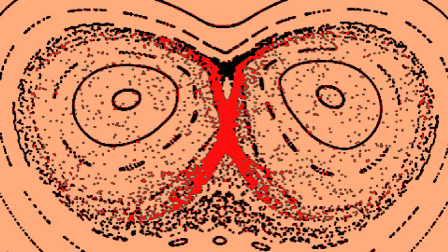BGU researchers have discovered that excessively slow adiabatic processes in cold atom systems can be highly inefficient, in contrast to previous assumptions.
Adiabatic processes are a fundamental family of physical processes, wherein a system is guided from an initial state to a target state via slow variation of control parameters. One such familiar protocol is known as 'Stimulated Raman Adiabatic Passage' (STIRAP); one application of STIRAP is to move atoms in space.
The concept of adiabaticity can be illustrated by considering the example of serving a teacup full-to-its-brim. In order not to spill any fluid, the process has to be carried out sufficiently slowly so as not to generate ripples. Using a more general physics vocabulary, the slowness of changing the control parameter (the teacup's position) should ensure there are no unwanted 'excitations' (ripples) which would lead to the loss of fluid.
In a new manuscript, published in Physical Review Letters, Prof. Amichay Vardi and Dr. Amit Dey from the Department of Chemistry, and Prof. Doron Cohen from the Department of Physics, explore what happens when adiabatic passage is carried out in many-body cold atom systems.
The researchers found that during its evolution, the system encounters brief chaotic intervals during which its behavior becomes erratic, a fact that had been ignored previously ignored. Due to these chaotic intervals, and in sharp contrast to our teacup example, adiabatic processes become inefficient if they are carried out too slowly, because the system has time to 'ergodize'.
Thus, according to the researchers, the optimal adiabatic passage rate, is determined by the the interplay of the standard demand to avoid single-particle excitations, and the need to quickly traverse the many-body chaotic stage.
The researchers note that this finding is relevant to the design of cold-atoms-based devices and circuits. This field, often designated as 'atomtronics', is a part of the evolving vast discipline of 'Quantum Technology'. One of the major goals of the field is the efficient and coherent control of atoms. The present work deals with the general phenomenon of adiabatic control, specifically demonstrating the validity of the analysis for the STIRAP scheme.

Above: The dynamics of the system is illustrated in phase-space (an abstract space that accomodates all possible states of the systemI. The red cloud indicates how the evolving state of the system is stretched in phase-space due to chaos. Without chaos the red cloud would be locked at the center instead of being smeraed over the chaotic strip.